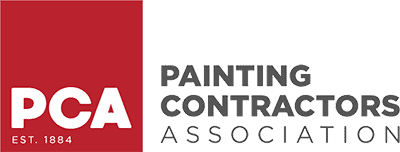Homeowners will tackle their living room’s outdated painting project over the weekend. They pick a color they love, grab the nearest roller, and dive headfirst. A few hours later, streaks, uneven finishes, and splotchy edges leave them frustrated and regretting their DIY decision. Does this sound familiar?
You’re not alone. Many homeowners fall victim to interior paint mistakes that can make a simple refresh a headache.
In this blog, we’ll explore the most common interior paint mistakes, how to avoid them, and the steps to achieve a flawless finish every time.
Key Takeaways:
- Avoiding common interior paint mistakes can save you time, money, and frustration.
- Proper preparation, tools, and techniques are essential for professional-looking results.
- If in doubt, hiring professionals ensures a flawless and stress-free experience.
1. Skipping Surface Preparation
One of the most overlooked steps in painting is surface preparation. This leads to uneven finishes, poor adhesion, and peeling paint.
- Clean the walls: Dirt, grease, and dust can prevent paint from adhering correctly.
- Fill holes and cracks: Use spackle or caulk to smooth imperfections.
- Sand the surface: Sanding ensures a smooth and even base for the paint.
Pro Tip: Don’t forget to remove outlet covers and light switch plates before starting.
2. Choosing the Wrong Paint
Not all paint is created equal, and selecting the wrong type can be one of the most costly interior paint mistakes.
- Flat finishes work best for ceilings and low-traffic areas.
- Satin or eggshell finishes are great for living rooms and bedrooms.
- Semi-gloss and gloss finishes are ideal for trim, doors, and high-moisture areas like kitchens and bathrooms.
Tip: Always check the label to ensure the paint suits the intended surface.
3. Neglecting Primer
Primer is a must for a professional finish, mainly if you cover dark colors, paint over stains, or work on new drywall. Skipping this step can result in uneven color and poor durability.
- When to use primer:
- Switching from a dark to a light color.
- Painting over a glossy surface.
- Dealing with stains or water damage.
Pro Tip: Some paints have a built-in primer, but a separate primer is still best for significant color changes or tricky surfaces.
4. Using Low-Quality Tools
Your tools can make or break your project. Cheap brushes and rollers often lead to streaks, shedding bristles, and uneven application.
- Invest in:
- High-quality synthetic brushes for latex paints.
- Foam rollers for smooth finishes.
- Angled brushes for cutting in edges.
Tip: Wash and store your tools properly for reuse.
5. Painting in the Wrong Conditions
Temperature, humidity, and lighting play significant roles in applying paint. Painting in less-than-ideal conditions is a frequent interior paint mistake.
- Avoid painting:
- In extreme heat or cold, it affects drying time.
- High humidity, which can cause streaks and uneven drying.
- In dim lighting, it is harder to spot imperfections.
Pro Tip: Use natural light or high-quality artificial lighting to inspect your work as you go.
6. Overloading Your Brush or Roller
Too much paint at once can lead to drips, runs, and uneven coverage.
- Dip your brush no more than one-third of the way into the paint.
- Rollers should be evenly loaded but not dripping.
- Apply paint in thin, even coats and allow proper drying time between layers.
Tip: Two to three thin coats are better than one thick coat.
7. Ignoring Proper Edging Techniques
Messy edges are a dead giveaway of DIY painting. One of the easiest interior paint mistakes to spot is skipping painter’s tape or rushing through edging.
- Use painter’s tape to create clean lines around trim, ceilings, and baseboards.
- Feather edges with an angled brush for seamless blending.
- Remove the tape while the paint is still slightly wet to avoid peeling.
Bonus Tips for Success
Avoiding interior paint mistakes isn’t just about what not to do—it’s about adopting innovative strategies for success.
- Create a test patch: Apply a small amount of paint to see how it looks in your space.
- Work systematically: Paint one wall at a time to maintain a wet edge and avoid lap marks.
- Be patient: Allow the paint to dry completely before adding coats or reattaching hardware.
Why Hiring Professionals Makes a Difference
While DIY projects can be rewarding, painting is often more complex than it seems. Hiring experts eliminates the risk of interior paint mistakes and ensures a polished, long-lasting result.
At If Walls Could Talk, we handle every detail, from preparation to cleanup, so that you can enjoy a hassle-free transformation.
Avoid the Common Pitfalls of Painting
A well-painted interior can elevate your home’s aesthetic and create a welcoming atmosphere. Avoid these common interior paint mistakes and follow expert advice to achieve the stunning results you envision.
If you’d instead leave it to the pros, call If Walls Could Talk today at (860) 530-2744 for a free estimate. Our team is here to help you transform your space without the stress or mess.
By focusing on preparation, technique, and attention to detail, you can avoid the pitfalls of interior paint mistakes and create a beautiful, lasting finish you’ll be proud to show off. Whether DIY or professional, your perfect paint job awaits!



